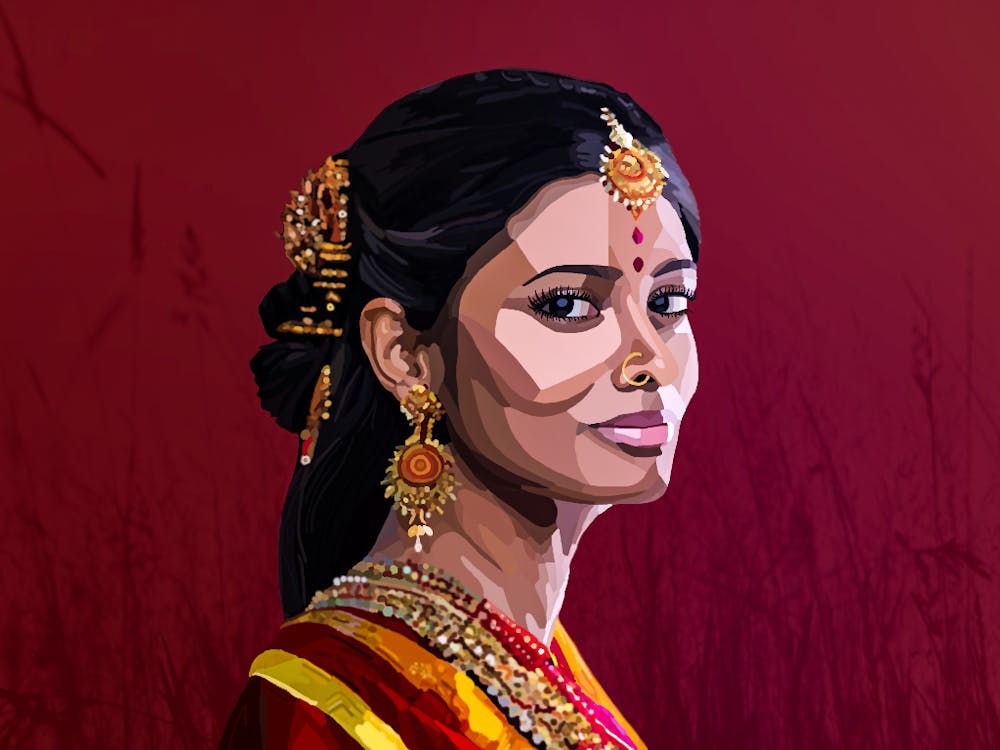Should Medusa have been feared for her cursed eyes? Or should she have been pitied for being assaulted and cursed through no fault of her own?
The trend of innocent women wrongfully blamed or abused is prevalent in original mythological stories across the world, from the famous Greek pantheon to the Hindu gods.
Hence, several authors are breathing life into these centuries-old myths with a focus on providing a platform for misrepresented voices. The resulting works of fiction are taking over the fantasy realm.
The underlying misogyny threaded through famed mythical stories can either be glaringly obvious or so minute that it is missed until one looks closely. The new era of retellings pulls on these stray threads to turn them into rich lore with proper representation of characters who have experienced injustice. Feminist retellings have become a trend that has toppled other mainstream books and has cemented their high-ranking position on best-selling lists. In 2024, there's a dominating conversation around women's rights, and it is reflected in the reading choices of women who indulge in retellings surrounding historically marginalized female characters.
There are a handful of misrepresented characters in Greek mythology. One such character is Circe, the daughter of Helios, who was excluded from society due to her powers. Another is Medusa, one of the three Gorgons, who was cursed even though she was raped. Straying away from Greek mythological figures, a figure from Hinduism would be Kaikeyi, the third queen of Ayodhya, who was stated as the evil stepmother even though she merely demanded her rightful oaths. Such lore is rampant among varying myths in which the women are reminded of their "inferior" status and thus ignored and violated.
If you are a fan of Greek myths or grew older with Percy Jackson's takes, you must have heard about the famous book "Song of Achilles" by Madeline Miller through word of mouth or through the craze it garnered on BookTok.
But another of her lesser-known fan favorites is "Circe"—a tale of a well-known character, but with consideration to her personality and identity. An example in the genre of Greek myths would be "The Penelopiad" by Margaret Atwood, in which Atwood gave the women in the famed work "The Odyssey" a voice to state their perspective on the tale.
There's extreme importance of being provided a voice in a literary piece, and women have been denied this crucial need for centuries. In 1972, Cynthia Griffin Wolff mentioned in "A Mirror for Men: Stereotypes of Women in Literature" that in Charles Dickens' works, women are only satisfied with life by becoming a mother. She further talks about how authors portray women as the more "emotional and sensitive" gender while destroying a person's individuality. In contrast to subjecting female characters to be more emotional, these characters were not allowed to express anger. This skewed perspective also taints famed myths around the world.
When you read about Circe through myths, you see a woman who cursed the soldiers of Odysseus without reason—the daughter of Helios who turned to witchcraft rather than to the sun. In Miller’s modern re-telling of Circe’s story, she turns Circe into a protagonist who becomes a villainized character and poses a challenging quest for heroes to defeat and assert their prowess.
Miller wades through the mist of sexist opinions to provide the ideal combination of the original myth with the voice of Circe which completely overturns the centuries-old plotline.
The novel begins with the alienation of Circe resulting in her choosing shelter at her father, Helio's feet. The beratement of Circe starts with her mother calling her "Stupid Circe" for lacking the beauty and power required to attract a son of Zeus, the king of the gods. Time and time again, Circe is subject to disappointment and loneliness as her loved ones choose to abandon her rather than stand by her. The ideal example is her only sibling with whom she builds a bond, Aeëtes, who also chooses personal gain, a kingdom, over his sister. Another incident is the human fisherman, Glaucos, who wins Circe's heart. Throughout her childhood, the deprivation of love led Circe to become infatuated with him quickly. In her naivety, she wished for him to become a god and stay by her side. With the grandmother's wisdom, Circe succeeds, but the harsh reality of people is yet again disappointing as Glaucos quickly forgets her once he gains godhood and fame.
Miller recreates the characterization of Circe as a woman refuting societal views and establishing a unique identity through her relationships. The major addition of nuances to her personality and life elevates Circe's character into one with complexity rather than being black and white.
Due to the popularity of Greek myths, there have been various retellings released recently providing a platform for the perspective of female characters. On the other hand, more unpopular folklore from different cultures don't receive the same attention among the reading community which provides less opportunity for marginalized characters to be revamped. However, a rare Hindu myth retelling is of an infamous “villain” named Kaikeyi from "The Ramayana" in "Kaikeyi: A Novel" by Vaishnavi Patel.
In "The Ramayana," Kaikeyi is the indirect villain because she uses her promised boons to send her stepson into exile. The setting of the novel is the same as of the famous poem, Ayodhya, with the presence of the King Dasharath and his sons Rama, Lakshman, Bharath and Shatrugana. According to legend, Kaikeyi was a jealous woman because she used her boon to force her husband to send his favored son into exile and tried to make her son, Bharath, the king of Ayodhya.
In Patel's retelling of the saga, Patel has revolutionized the characterization and circumstances of the warrior princess who sought independence and respect. She envisions Kaikeyi as the first queen to establish and head a woman’s council to provide justice for women and children in society while also cementing her position in the court as the king's right hand. The author further emphasizes Dasharath conveniently overlooking the oath given to his wife, Kaikeyi, which states that her son will become the next king. This action of Dasharath paints him as a man who manipulates a young woman into marriage with an oath that he didn't intend to fulfill. Patel also overturns the reasoning for why Kaikeyi extracted her boons to force her stepson Rama into exile. In the novel, Kaikeyi wanted her arrogant stepson to have the time to reflect on worldly issues and become more balanced within himself before taking on the weight of the king's crown and the people of Ayodhya.
This retelling of Kaikeyi allows the audience to understand and acknowledge the nuances and intricacies of her life, from childhood to being the third queen of Ayodhya. The struggle to protect her freedom and gain respect for herself and other women is beautifully woven into the original myth of "The Ramayana." The audience also witnesses the curses and hatred she bore to become a self-sufficient woman with ambitions. Since most misogynist literature repels a woman with identity and ambitions.
These novels such as "Circe" and "Kaikeyi: The Novel" establish a space for female readers to enjoy and understand the perspectives of women in famous pieces. It showcases that ambition and the will to gain power are not inherently evil just because the one who seeks it is a woman. Such novels encourage the audience to look closely into the societal prejudices towards women and reformulate characters portrayed as purely evil into personalities who are turning the tide to adjust to the injustices experienced by them.
The audience is yet to see how many more illustrious retellings from various cultural folklore will grace the genre. They have lasted centuries of male-dominated literary pieces, they deserve a change, and the literary trends are providing a challenge to outdated stereotypes.
Readers deserve to witness the inner turmoil of Circe, the injustice experienced by Medusa, and the plights of Kaikeyi.
They deserve to see women as individuals and not as mute objects.



